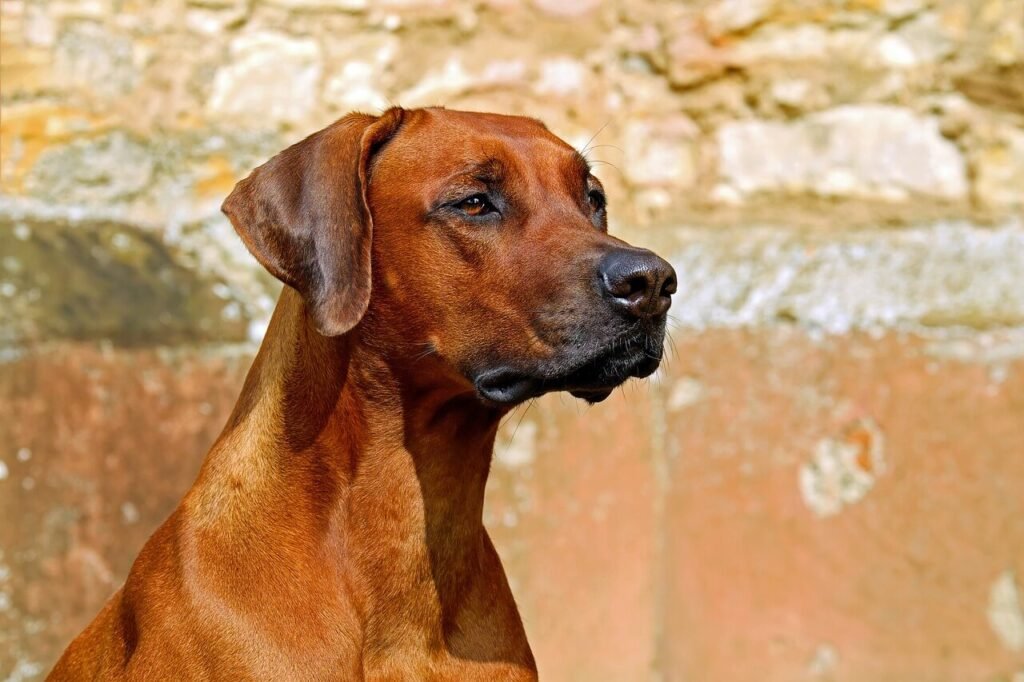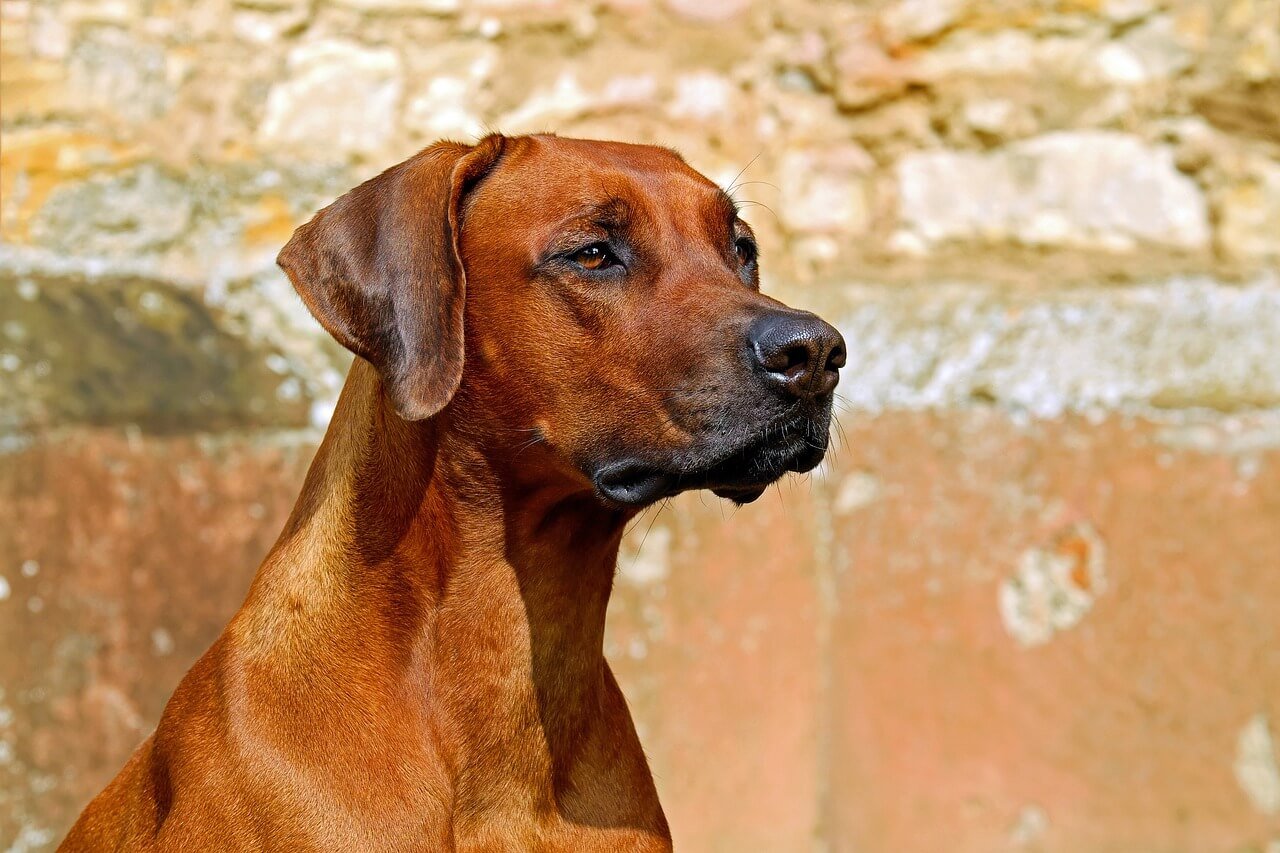Ectropion in Dogs: Understanding the Condition and Its Impact
Ectropion is a common eye condition in dogs where the lower eyelid rolls outward, leaving the sensitive inner lining of the eyelid exposed. While this condition is not always painful, it can lead to discomfort, irritation, and even more serious complications if left untreated. Ectropion is often seen in certain breeds due to their unique facial structures, but it can occur in any dog. In this blog post, we’ll explore what ectropion is, its causes, symptoms, treatment options, and how to care for a dog living with this condition. Whether you’re a concerned pet owner or simply curious about canine health, this guide will provide valuable insights into managing ectropion in dogs.
What Is Ectropion in Dogs? Breaking It Down
Ectropion occurs when the lower eyelid droops or rolls outward, exposing the conjunctiva—the pink, fleshy tissue inside the eyelid. This condition can vary in severity, from mild cases that cause minimal discomfort to severe instances requiring medical intervention. Here’s what you need to know about ectropion in dogs:
Anatomical Abnormality: The eyelid’s structure prevents it from maintaining proper contact with the eye’s surface.
Breed Predisposition: Certain breeds, like Bloodhounds and Saint Bernards, are genetically prone to ectropion due to their loose facial skin.
Exposure Risks: The exposed conjunctiva is more vulnerable to irritants, infections, and dryness.
Symptoms Vary by Severity: Mild cases may only cause slight redness, while severe cases can lead to chronic eye problems.
Can Be Congenital or Acquired: Some dogs are born with ectropion, while others develop it later due to injury or aging.
Understanding these key points helps explain why ectropion requires attention and how it impacts your dog’s overall health.
Signs and Symptoms of Ectropion in Dogs
Recognizing the signs of ectropion early can help prevent complications and ensure timely treatment. If you notice any of these symptoms, consult your veterinarian for a proper diagnosis. Here’s what to look for:
Visible Eyelid Drooping: The most obvious sign is the outward rolling of the lower eyelid, often more noticeable when the dog is relaxed.
Red or Irritated Conjunctiva: The exposed inner eyelid tissue may appear inflamed or irritated.
Excessive Tearing: Watery eyes are a common symptom as the body tries to compensate for dryness or irritation.
Frequent Eye Infections: Bacteria or debris can accumulate in the exposed area, leading to recurring infections.
Squinting or Pawing at Eyes: Dogs may rub or paw at their eyes due to discomfort or irritation.
If your dog exhibits any of these symptoms, it’s crucial to seek veterinary advice to determine the underlying cause and appropriate treatment.
Check this guide 👉Eclampsia in Dogs: Best 7 Expert Tips!
Check this guide 👉Eosinophils in Dogs: Best 7 Health Tips!
Check this guide 👉Strabismus in Dogs: Best 7 Health Tips!

Symptoms of Ectropion in Dogs | Potential Complications |
|---|---|
Visible eyelid drooping | Chronic dry eye syndrome |
Red or irritated conjunctiva | Increased risk of corneal ulcers |
Excessive tearing | Recurring bacterial or viral infections |
Frequent eye infections | Vision impairment in severe cases |
Squinting or pawing at eyes | Discomfort and pain affecting quality of life |
Treatment Options for Ectropion in Dogs
The treatment for ectropion depends on the severity of the condition and whether it’s causing significant discomfort or complications. Here are some common approaches veterinarians may recommend:
Artificial Tears or Lubricants: For mild cases, lubricating eye drops can help keep the exposed conjunctiva moist and reduce irritation.
Antibiotics or Anti-Inflammatory Medications: These may be prescribed to treat or prevent infections and inflammation.
Surgical Correction: In severe cases, surgery may be necessary to tighten the eyelid and restore its normal position.
Regular Cleaning: Keeping the affected area clean reduces the risk of infection and minimizes discomfort.
Monitoring and Follow-Up: Regular vet visits ensure the condition is managed effectively and complications are caught early.
By following your veterinarian’s recommendations, you can help your dog live comfortably despite ectropion.
Preventing Complications of Ectropion in Dogs
While ectropion itself cannot always be prevented, there are steps you can take to minimize its impact and avoid complications. Here’s how to care for a dog with ectropion:
Keep the Eyes Clean: Gently wipe away discharge or debris from the eyes using a damp cloth or vet-recommended wipes.
Avoid Irritants: Keep your dog away from smoke, dust, and other environmental factors that could irritate their eyes.
Provide a Balanced Diet: Proper nutrition supports overall eye health and boosts your dog’s immune system.
Schedule Regular Vet Check-Ups: Routine exams allow your vet to monitor the condition and address issues before they worsen.
Be Observant: Watch for changes in your dog’s behavior or eye appearance and report them to your vet promptly.
Taking these preventive measures can help reduce the risk of complications and improve your dog’s quality of life.
Which Dog Breeds Are More Likely to Develop Ectropion?
Certain dog breeds are genetically predisposed to ectropion due to their physical characteristics, such as loose facial skin. If you own one of these breeds, it’s important to be vigilant about their eye health. Here are some breeds commonly affected:
Bloodhounds: Known for their droopy eyes and loose skin, Bloodhounds are highly prone to ectropion.
Saint Bernards: Their large size and sagging facial features make them susceptible to this condition.
Basset Hounds: The combination of loose skin and short muzzles increases their risk of developing ectropion.
Cocker Spaniels: This breed often experiences eyelid abnormalities, including ectropion.
Great Danes: Their large, expressive eyes and facial structure can contribute to eyelid issues.
Understanding breed predispositions allows you to monitor your dog closely and seek veterinary care if symptoms arise. Early intervention can prevent complications and improve outcomes.
Proactive Steps to Maintain Healthy Eyes in Dogs with Ectropion
Even if your dog has ectropion, there are ways to support their overall eye health and minimize discomfort. By incorporating these practices into your routine, you can help protect their vision and well-being. Here’s what you can do:
Use a Humidifier: Adding moisture to the air prevents dryness, which can worsen irritation for dogs with ectropion.
Avoid Harsh Weather Conditions: Protect your dog’s eyes from wind, dust, and extreme temperatures that could exacerbate symptoms.
Provide Omega-3 Fatty Acids: Supplements or foods rich in omega-3s promote eye health and reduce inflammation.
Trim Facial Hair: For long-haired breeds, keeping hair around the eyes trimmed reduces the risk of irritation.
Educate Yourself on Eye Care: Learn how to spot early warning signs of complications, such as redness or swelling.
By taking these steps, you can create a supportive environment that helps your dog manage ectropion effectively and maintain good eye health.
Signs That Your Dog Needs Immediate Medical Attention
While mild ectropion may not require urgent care, certain symptoms indicate a need for immediate veterinary attention. Recognizing these signs ensures your dog receives timely treatment to prevent further damage. Here’s what to watch for:
Severe Redness or Swelling: Excessive inflammation could signal an infection or worsening condition.
Cloudy or Discolored Eyes: Changes in the appearance of the eye may indicate corneal ulcers or other serious issues.
Excessive Squinting or Pawing: Persistent attempts to rub the eyes suggest significant discomfort or pain.
Discharge with Odor: Foul-smelling or thick discharge is a sign of infection that requires prompt treatment.
Vision Changes: If your dog seems disoriented or struggles to navigate, it may indicate vision impairment.
If you notice any of these signs, contact your veterinarian immediately. Timely intervention can prevent complications and ensure your dog’s comfort and health.
Frequently Asked Questions About Ectropion in Dogs
What is ectropion in dogs?
Ectropion is a condition where the lower eyelid rolls outward, exposing the sensitive tissue inside the eyelid.
Which dog breeds are prone to ectropion?
Breeds with loose facial skin, such as Bloodhounds, Saint Bernards, and Basset Hounds, are more likely to develop ectropion.
Is ectropion painful for dogs?
Mild cases may cause minimal discomfort, but severe cases can lead to irritation, infections, and pain.
How is ectropion treated?
Treatment ranges from artificial tears and medications to surgical correction in severe cases.
Can ectropion lead to vision problems?
Yes, if left untreated, chronic irritation or infections can impair vision over time.
Final Thoughts: Supporting Your Dog with Ectropion
Ectropion in dogs may seem daunting, but with proper care and veterinary guidance, it’s a manageable condition. By recognizing the symptoms early, following your vet’s treatment plan, and taking preventive measures, you can ensure your dog enjoys a happy, comfortable life. Remember, your furry friend relies on you to advocate for their health and well-being. With love, attention, and proactive care, you can help them overcome the challenges posed by ectropion and continue sharing countless joyful moments together.
Understanding Scabs in Dogs Ears: Best 7 Tips! Learn how to identify, treat, and prevent scabs in your dog’s ears for optimal ear health.
Is Cinnamon Bad for Dogs? Best 7 Health Tips! Discover safe ways to use cinnamon, risks to avoid, and expert advice to keep your dog healthy.
Can Dogs Get Pneumonia from Humans? Best 7 Tips! Learn how to protect your dog, understand transmission risks, and ensure their respiratory health.
Can Dog Urine Make You Sick? Best 7 Health Tips! Learn how to stay safe, prevent illness, and handle exposure to dog urine effectively.





